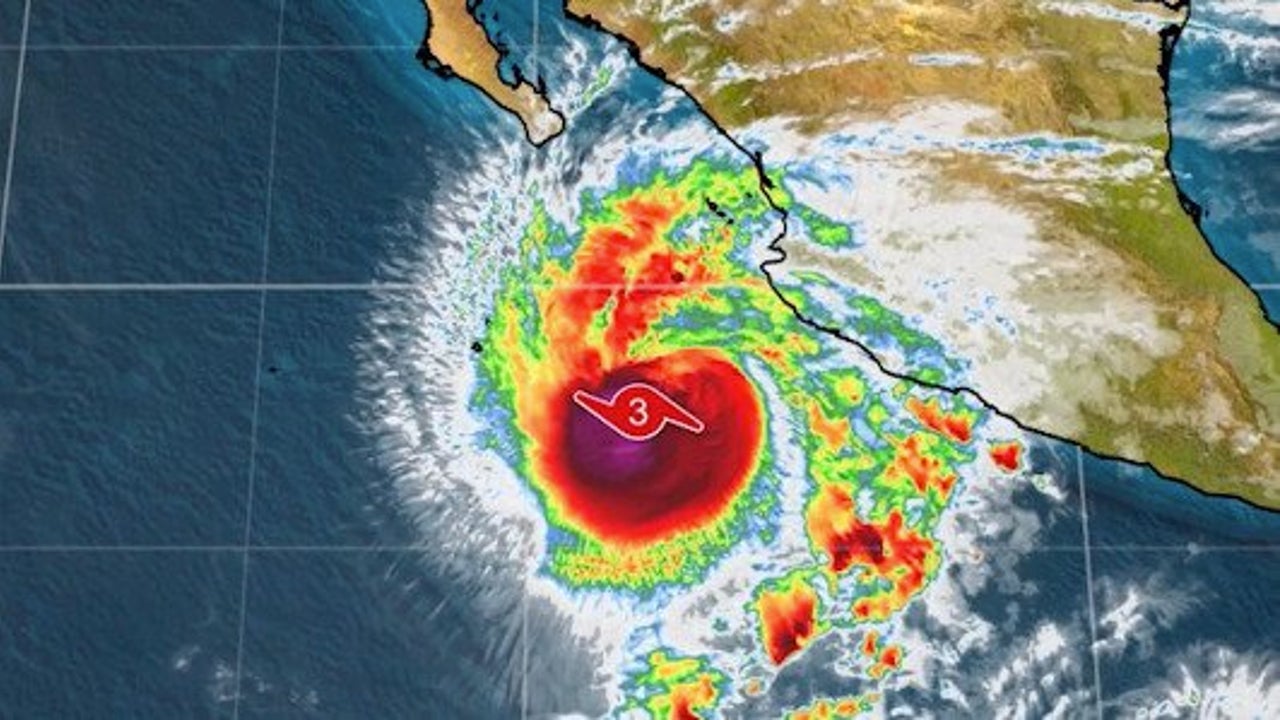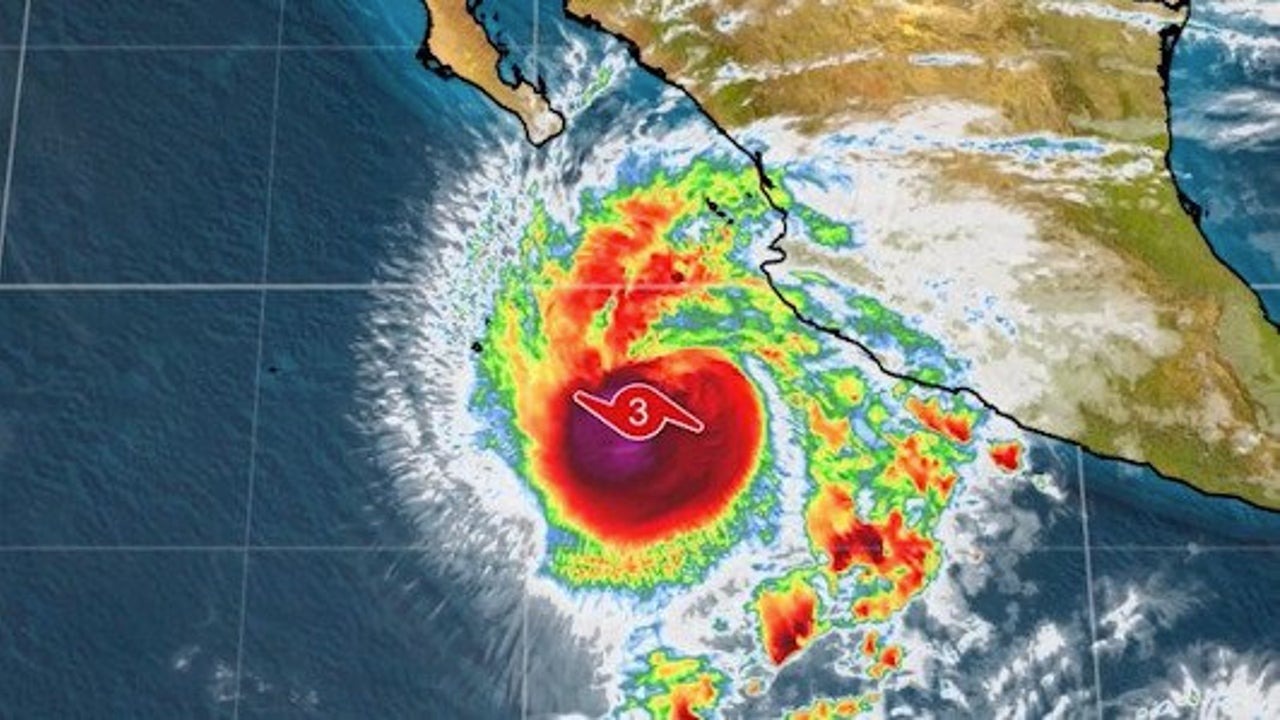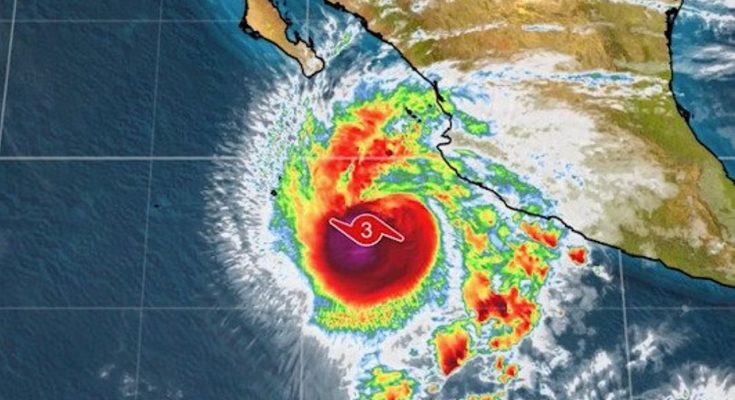Hurricane Flossie: A Category 3 Giant Churns in the Pacific
Hurricane Flossie, a formidable Category 3 hurricane, is currently making its presence felt in the eastern Pacific Ocean. This powerful storm, closely tracked by the US National Hurricane Center (NHC), boasts sustained winds reaching a staggering 185 kilometers per hour (115 mph) as of late Tuesday. This impressive speed firmly places it within the “major hurricane” classification on the Saffir-Simpson Hurricane Wind Scale.
Flossie’s Current Location and Trajectory
Where is the Hurricane Now?
At the time of writing, the NHC’s latest advisory positions Hurricane Flossie approximately 505 kilometers (315 miles) south-southeast of Cabo San Lucas, a popular Mexican resort destination. The storm is currently moving west-northwest at a steady pace of 17 kph (10 mph), a trajectory expected to persist over the next 24 to 36 hours.
The Forecast: Strengthening, Then Weakening
While forecasters predict a slight intensification of Flossie’s strength through Wednesday, a gradual weakening is anticipated later in the week. This change is attributed to cooler waters and less supportive atmospheric conditions as the hurricane progresses further into the Pacific.
Impacts on Mexico’s Pacific Coast
Areas Already Affected
Although a direct landfall isn’t currently predicted, the outer rainbands of Hurricane Flossie are already impacting several Mexican states. Michoacán, Colima, and Jalisco are experiencing periods of heavy rainfall, localized flooding, and turbulent coastal waters. Mountainous and low-lying regions are particularly vulnerable to flash floods and landslides, especially where the ground is already saturated. While an earlier tropical storm warning from Punta San Telmo to Playa Pérula has been lifted, caution remains paramount due to the potential for rain-related hazards.

Hazardous Marine Conditions
Boating enthusiasts and coastal residents are strongly urged to exercise extreme caution. High waves, powerful rip currents, and sudden wind gusts pose significant risks to small boats and beachgoers. Authorities strongly advise avoiding coastal areas until Flossie moves further offshore and conditions improve.
Mexico’s Preparedness and Response
The Mexican government is fully mobilized. The Secretariat of the Navy (SEMAR) and the National Civil Protection System have activated preventative measures, particularly in historically vulnerable regions. Emergency shelters stand ready in at-risk municipalities, and local authorities diligently monitor river levels and landslide-prone zones. The National Meteorological Service (SMN) provides continuous updates, including radar images and risk alerts, urging citizens to rely solely on official channels for information.
Travel and Tourism Implications
Cabo San Lucas and nearby resort areas are closely monitoring Flossie’s progression. Despite the low probability of a direct hit, rough seas and potential travel disruptions are anticipated. Airlines servicing Baja California Sur may experience delays, and cruise lines are adjusting their routes to avoid the storm. Tourism boards are reassuring visitors that safety precautions are in place, and currently, resorts and residential areas face no immediate threat.
Understanding the Broader Context
Hurricane Flossie is an early example of a major hurricane during the 2025 Pacific hurricane season (May 15th to November 30th). Climate experts suggest warmer ocean temperatures and shifting atmospheric patterns may result in more intense and frequent storms this year. The National Oceanic and Atmospheric Administration (NOAA) predicts 15-20 named storms annually in the eastern Pacific, with around four to five developing into major hurricanes.
Safety Recommendations and Final Outlook
While a direct landfall is currently unlikely, Flossie’s Category 3 status underscores the need for vigilance. Authorities advise residents in affected states to:

- Stay updated through official sources like the SMN and NHC.
- Avoid unnecessary travel in coastal or mountainous areas.
- Secure outdoor objects vulnerable to wind and rain.
- Follow local government directives and prepare for potential evacuation.
- Avoid beaches and rivers due to the risk of rising water levels.
In conclusion, while Hurricane Flossie’s immediate threat of landfall is low, its impact will be felt across western Mexico through Wednesday. Emergency services are on high alert, and residents in Michoacán, Colima, and Jalisco are urged to exercise caution and stay informed about any changes in the storm’s path. Remember to consult official sources like the US National Hurricane Center (NHC), Mexico’s National Meteorological Service (SMN), and the Secretaría de Protección Civil México for the latest updates.






